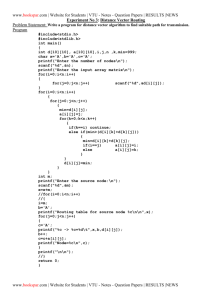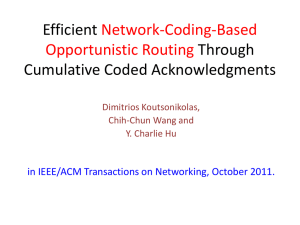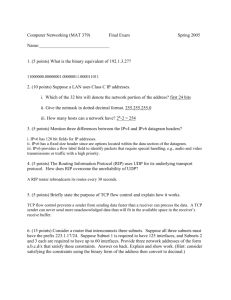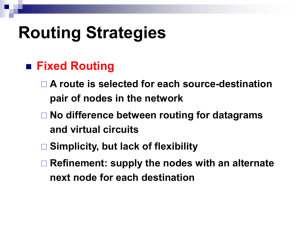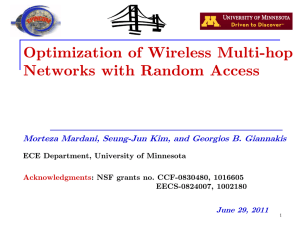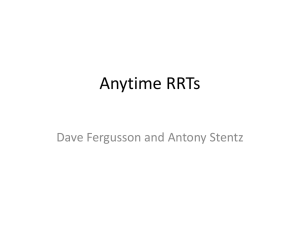ch22 part2
advertisement
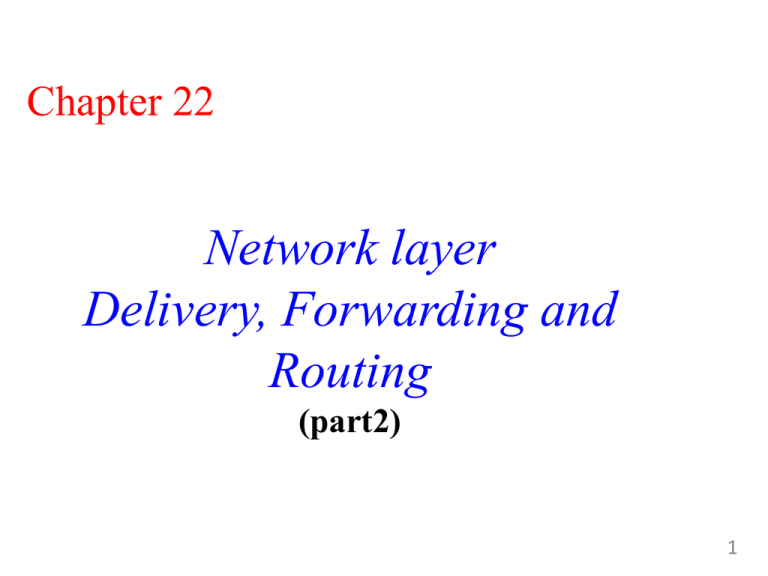
Chapter 22 Network layer Delivery, Forwarding and Routing (part2) 1 Interior and Exterior routing protocols Each AS can choose one or more intradomain(interior) routing protocol to handle routing inside the AS such as RIP and OSPF One interdomain (exterior) routing protocol is usually chosen to handle routing between ASs ; BGP 2 Distance Vector Routing Each node( router) maintains a set of triples (table): Destination, Cost and Next Hop Node knows the cost to each neighbor (the distance between itself and its immediate neighbors) Directly connected neighbors exchange updates periodically (on the order of several seconds -30s) whenever table changes (called triggered update) Each update is a list of pairs: Destination, Cost Update local table if receive a “better” rout (smaller cost) 3 Updating routing table When a node receives a two-column table from a neighbor, it needs to update its routing table. 1. The receiving node needs to add the cost between itself and the sending node to each value in the second column. 2. The receiving node needs to add the name of the sending node to each row as the third column (next node). 3. The receiving node needs to compare each row of its old table with the corresponding row of the modified version of the received table. a. If the next-node entry is different, the receiving node chooses the row with the smaller cost. If there is a tie, the old one is kept. b. If the next-node entry is the same, the receiving node chooses the new row. 4 Distance vector routing Initialization of tables in distance vector routing: infinite ∞ ( unreachable). Think the node as the cities and the lines as the roads connecting them 5 Distance vector routing Sharing: Updating in distance vector routing 6 Distance vector routing The least cost route between any two nodes is the route with min distance. Each node maintains a table which contains : Destination, Cost, Next hop 7 Distance vector routing 1. Each router shares its entire routing table with its neighbours. 2. Sharing: periodically update :on the order of several seconds -30sTriggered update: The change can result from the following: A node receives a table from a neighbor, resulting in changes in its own table after updating. A node detects some failure in the neighboring links which results in a distance change to infinity ∞ 3. Each update is a list of pairs: Destination, Cost (two column routing table) 8 Two-Node Loop Instability • A problem with distance vector routing is instability, which means that a network using this protocol can become unstable Solutions to two-node instability • Defining Infinity. Most implementation of the distance vector protocol define the distance between each node to be 1 and define 16 as infinity. Therefore, the distance vector cannot be used in large systems • Split Horizon. In this strategy, instead of flooding the table through each interface, each node sends only part of its table through each interface. If node B thinks that the optimum route to reach X is via A, it does not need to advertise this piece of information to A. Solutions to two-node instability (cont.) Solutions to two-node instability (cont.) • Split Horizon and Poison Reverse. This strategy is a combination between split horizon and poison reverse where node B can still advertise the value of X, but if the source of information is A, it can replace the distance with infinity as a warning: “Don’t use this value; what I know about this route comes from you.”
